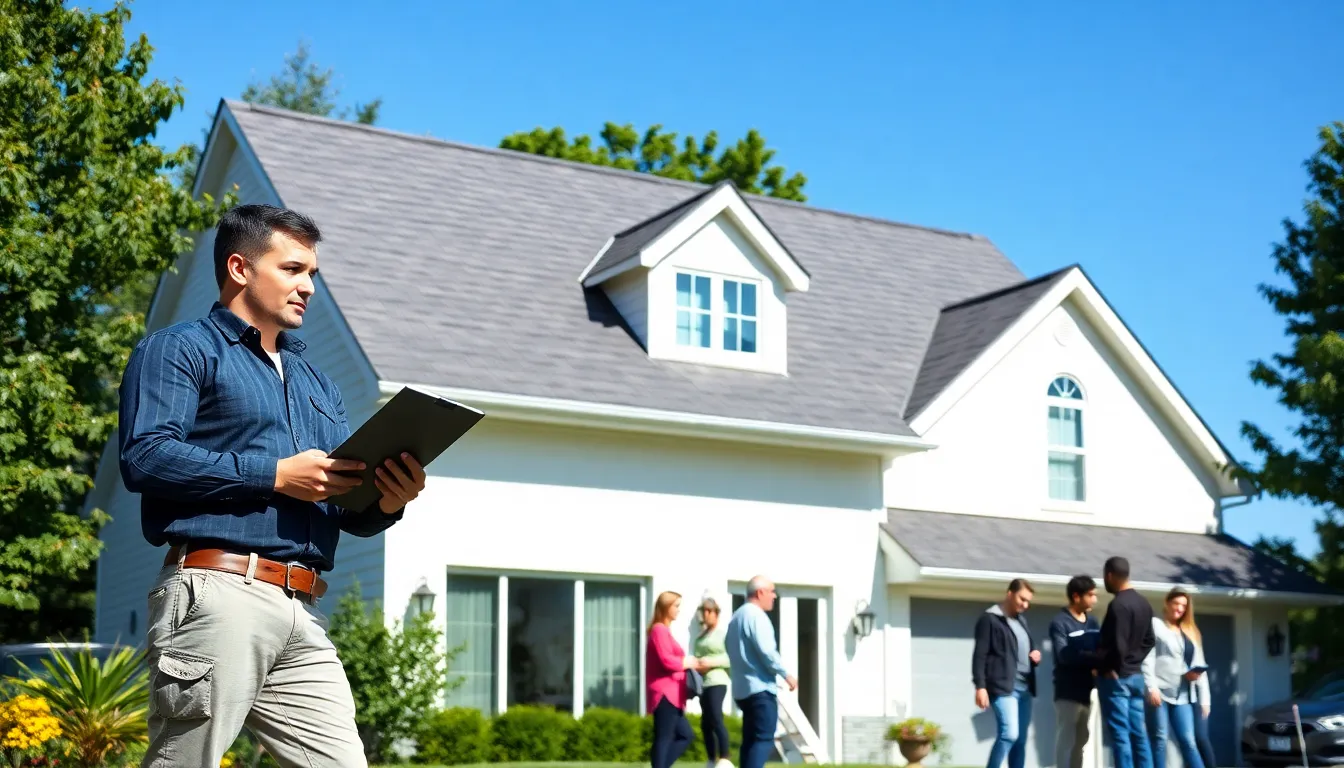When it comes to roofing, vinyl might not be the first material that springs to mind. Yet, homeowners around the country are discovering this durable option, and it’s becoming a hot topic in home renovations. Why? Because vinyl roofing balances style, affordability, and long-lasting results, all while keeping up with the latest trends. So, if you’re tired of shoveling snow off your roof or worrying about leaks every rainy season, sit back as we unpack everything you need to know about vinyl roofing. Spoiler alert: It’s not just affordable: it’s also pretty stylish.
Table of Contents
ToggleWhat Is Vinyl Roofing?

Vinyl roofing is a synthetic roofing material made primarily from polyvinyl chloride (PVC), which is a type of plastic. Known for its lightweight design and versatility, vinyl can mimic the look of other materials like wood or shingles without the hefty price tag. Homeowners appreciate how vinyl roofing is resistant to fading and weathering, making it an attractive option for those living in varying climates. Unlike traditional materials that can rot or become brittle, vinyl retains its shape and color over extended periods, leading to a roof that not only looks good but also lasts.
Typically available in sheets or shingles, vinyl roofing comes in various styles and colors. This flexibility allows homeowners to customize the look of their roofs, ensuring a perfect match for their home’s architecture. Plus, installation is often straightforward compared to more traditional roofing materials, making it easier for contractors to get the job done swiftly.
Summarizing, vinyl roofing offers the ideal blend of functionality and aesthetic appeal, reassuring homeowners that they’ve made one smart choice when it comes to covering their homes.
Benefits of Vinyl Roofing
Choosing vinyl roofing can provide homeowners with a wrecking ball of benefits, without the cost of a demolition project. Here are a few reasons why vinyl roofing is capturing hearts:
Durability
Vinyl roofing is built to withstand harsh weather conditions. Its resistance to extreme temperatures means it won’t crack or warp, reinforcing its reputation as a long-lasting option.
Low Maintenance
Forget about spending your weekends climbing onto your roof for repairs. Vinyl roofing requires minimal upkeep, saving homeowners both time and money in the long run.
Energy Efficiency
Thanks to its excellent insulation properties, vinyl roofing can help reduce energy bills by keeping homes cooler in the summer and warmer in the winter. Less energy use? Yes, please.
Cost-Effectiveness
With competitive pricing and low maintenance costs, this option won’t expensive. Homeowners love that they can achieve both quality and affordability simultaneously.
Aesthetic Versatility
From sleek modern looks to charming rustic vibes, vinyl roofing fits seamlessly into any home design. Homeowners can easily find styles and colors that match their vision.
Vinyl Roofing vs. Traditional Roofing Materials
When pondering roofing materials, homeowners often find themselves in the classic battle of vinyl versus traditional options like asphalt shingles or wood. Let’s break down how they stack up against each other:
Installation
Vinyl roofing typically requires less labor and time for installation, making it appealing for homeowners looking to speed up a project. Traditional materials often necessitate more intricate installation techniques, which can lead to higher costs.
Lifespan
While asphalt shingles last around 15-30 years, vinyl roofing can easily go beyond 40 years with proper maintenance. For those who prefer a long-lasting solution, vinyl is the clear winner.
Aesthetics
Traditional materials have their own charm, but vinyl’s adaptability often allows for unique designs and finishes, giving homeowners a breadth of choices that many traditional options simply can’t match.
Installation Process of Vinyl Roofing
The installation of vinyl roofing is often straightforward, but it’s crucial to follow the right steps to ensure longevity and performance. Understanding the installation process can demystify any trepidation about the project:
- Preparation: This involves removing old roofing materials and preparing the roof deck to ensure a clean surface.
- Underlayment Installation: Next, a waterproof underlayment is laid down to provide an extra layer of protection against moisture.
- Vinyl Panel Installation: The panels are then attached, usually starting from the bottom of the roof and working upward. This helps maintain a watertight seal.
- Sealing: Finally, seals and finishes are applied to complete the look and extra protection against the elements.
Homeowners might opt to hire professionals for the job, but many find that the installation process can be handled with a bit of DIY spirit.
Maintenance Tips for Vinyl Roofing
While vinyl roofing is known for its low maintenance requirements, keeping a few key tips in mind can maintain its peak performance:
Regular Inspections
Take some time to inspect your roof annually. This allows homeowners to catch any potential issues before they escalate into bigger problems.
Cleaning
To keep the vinyl looking fresh, a simple wash with soap and water can do wonders. Homeowners should avoid harsh chemicals that might damage the surface.
Trim Overhanging Branches
Keeping trees trimmed can prevent debris accumulation on the roof, which might lead to algae or moss growth. Plus, it reduces risks during stormy weather.
Cost Analysis of Vinyl Roofing
Cost is always a big consideration when tackling home improvements. Vinyl roofing is generally considered cost-effective, but what should one expect?
- Material Costs: Typically ranging from $2 to $6 per square foot, vinyl roofing remains affordable when compared to traditional materials.
- Installation Costs: While professional installation can add anywhere from $2 to $3 per square foot, the quicker installation process of vinyl can often offset these costs, making it a win-win situation.
- Long-Term Savings: Beyond initial costs, the long lifespan and low maintenance associated with vinyl can significantly reduce expenses over time. Homeowners may want to consider this in their budgeting to find the best value.






